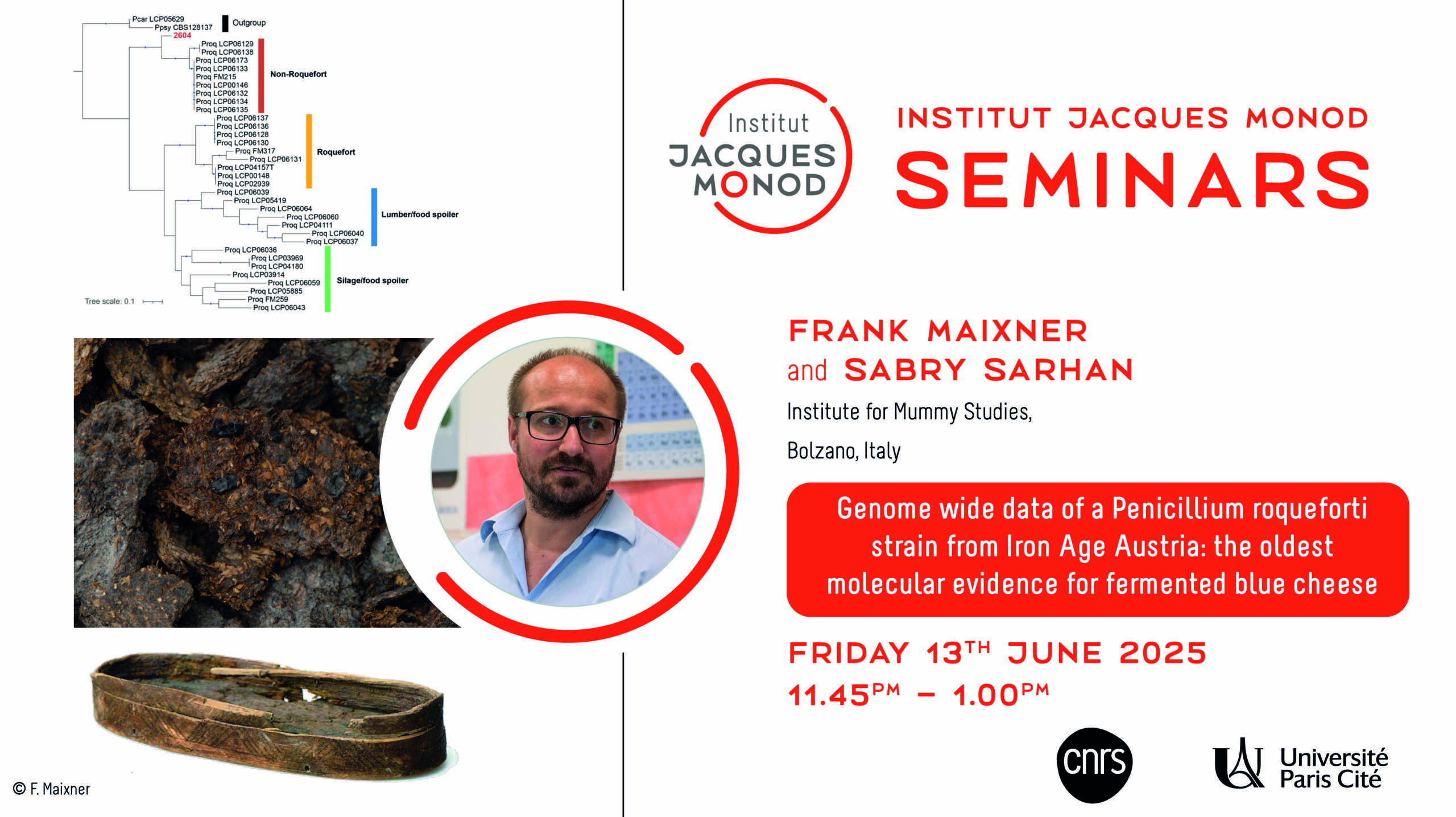
- Cet évènement est passé.
Séminaire de l’Institut Jacques Monod – Frank Maixner et Sabry Sarhan

Invités par l’équipe Grange/Geigl, Frank Maixner et Sabry Sarhan (Eurac Research – Institute for Mummy Studies, Bolzano, Italy) présenteront un séminaire de l’Institut Jacques Monod sur le thème :
Genome wide data of a Penicillium roqueforti strain from Iron Age Austria: the oldest molecular evidence for fermented blue cheese.
Résumé :
The application of metagenomic analysis on dated ancient human specimens opens a window into the past that enables scientists to address unique evolutionary research questions. Paleofeces are an important source of information to study the evolution of dietary habits and human health. The UNESCO World Heritage region of Hallstatt-Dachstein/Salzkammergut is one of Europe’s oldest cultural and industrial landscapes; its underground salt mines dating back at least to the 14th century BC are one of the few archaeological sites where paleofeces are well preserved. Here we subjected human paleofeces dated from the Bronze Age to early Modern Times to an in-depth microscopic, metagenomic and proteomic analysis. This allowed us to reconstruct the diet of the former population and gain insights into their ancient gut microbiome composition. Dietary survey identified a highly fibrous, carbohydrate-rich diet supplemented with proteins from broad beans and occasionally with fruits, nuts, or animal food. Linked to these traditional dietary habits all ancient miners up to the early Modern times have gut microbiome structures akin to modern non-Westernized individuals which may indicate a shift in the gut community composition of modern Westernized populations due to quite recent dietary and lifestyle changes. When we extended our microbial survey to fungi present in the paleofeces, we observed in one of the Iron Age samples a high abundance of Penicillium roqueforti DNA. Genome-wide analysis placed the ancient P. roqueforti strain into the current non-Roquefort blue cheese diversity next to modern variants from different parts of the Alps (e.g. Termignon). Our findings present the earliest molecular evidence for blue cheese consumption during Iron Age Europe, which opens a new opportunity to better understand the domestication history of blue cheese fermentation.

